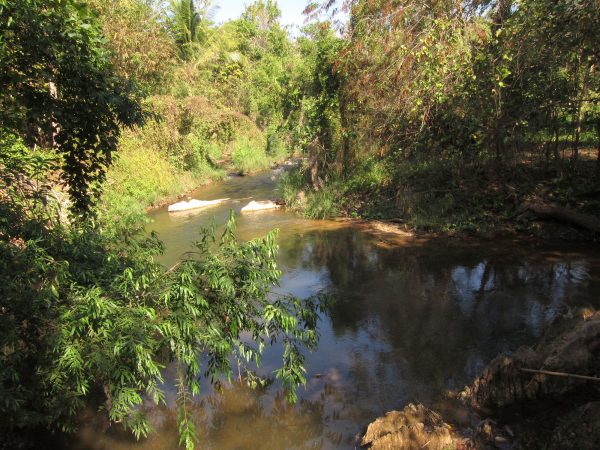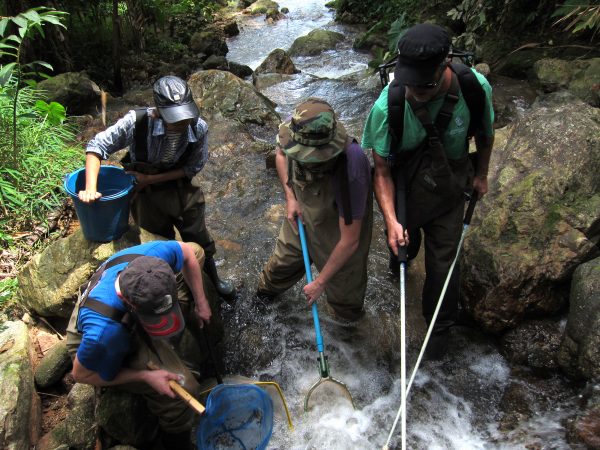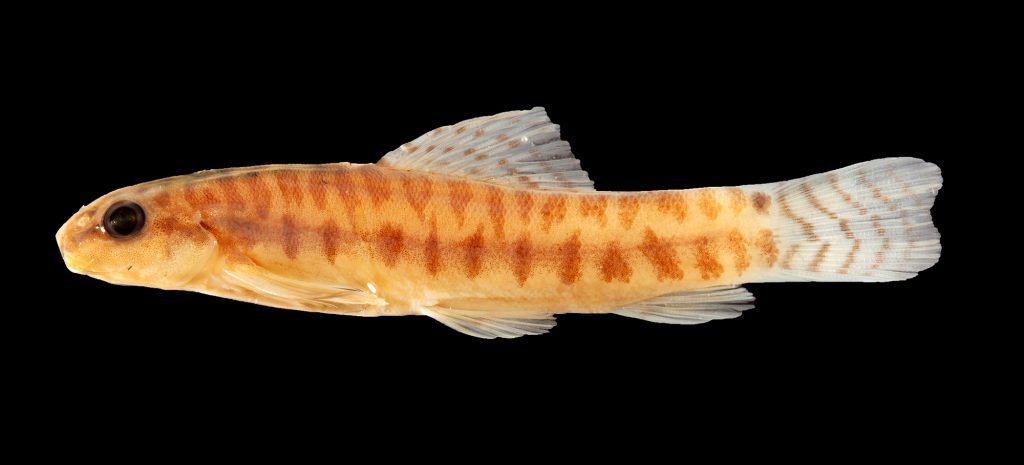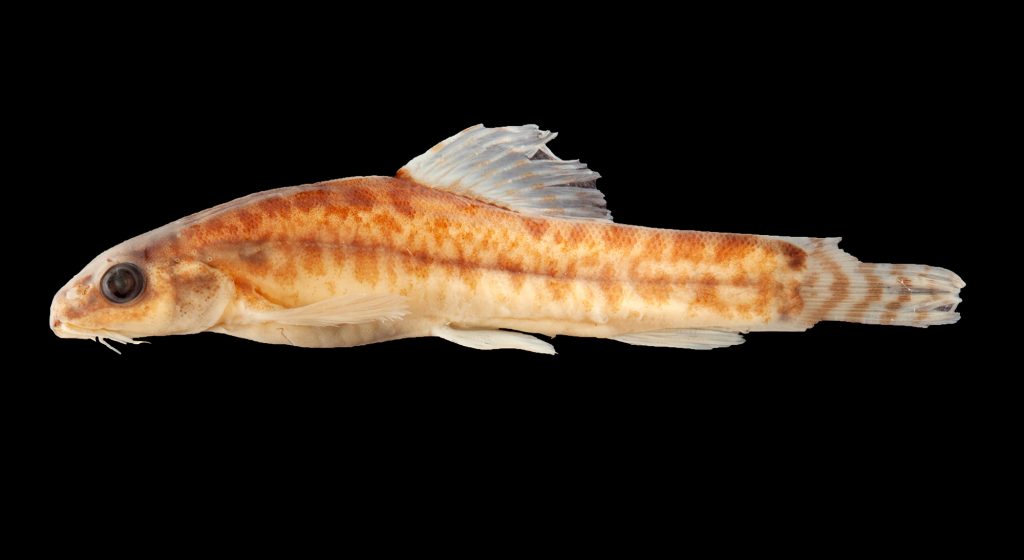Collecting in the field can run the gamut from spending a beautiful day walking along a pristine river to being shot at for getting too close to protected land. Randy Singer treasures his experiences working in the field in Southeast Asia as much as he values the resulting data collected. And when his paper on new species of zipper loaches was recently published, he took a look back on his scientific discovery and his personal journey collecting with the team in Thailand.

Florida Museum photo by Randy Singer
Total cultural immersion is a perk of collecting in distant, remote locations like Southeast Asia. From learning the language (or at least trying) and eating the local food, to attending weddings and religious events, researchers have no alternative to getting up close and personal with the people. The relationships with local scientists often deepen into true friendships in the field, and carry on for years.
When the team wasn’t knocking over hornet nests, wrangling venomous snakes, or being detained by local officials double- and triple-checking permits, they were waist deep in sometimes questionable water while sporadic rainstorms ambushed them. And there were threats from within the team when they amicably competed to see who could collect the most species at a field site. But the team spirit always prevails—unless teamwork means standing on the banks watching John Pfeiffer snorkel for mussels in water that locals have been flushing laundry and restroom waste into.

Florida Museum photo by Zachary Randall
Every researcher can reminisce for hours about adventures in the field, and most of the stories are at least somewhat true. At the end of a research trip, after a proper shower and a night’s sleep, the other half of the work begins—processing the information and using it to report to peers and the public about what you’ve been studying.
Randy published his master’s thesis (a revision of the loach genus Paracanthocobitis) in 2015, and has recently published this paper on some new species from data collected since receiving his master’s. He is now a Ph.D. candidate, and looking forward to more research in the field.
The short video below shows researchers seining for fish in a river in Thailand during a rainstorm in 2013. Shown: Randy Singer (pink slicker), Zachary Martin (blue rain jacket), Bob Beamish (shirtless scientist), Rungthip Plongsesthee (yellow poncho). Video by Zachary Randall
About the Paper
Authors: Randy Singer, John Pfeiffer and Larry Page
Topic: Three new species of zipper loach (genus Paracanthocobitis) were discovered from Thailand (P. nigrolineata – for the big black stripe down the side), Bangladesh (P. triangula – for the triangle shaped spot on caudal peduncle) and India (P. marmorata – for the odd marmorated pattern on side). The genus these species belong to were the topic of Randy’s master’s thesis where (along with Larry Page) they published a revision of the genus. The dwarf zipper loach (P. zonalternans) was a problematic species in the previous revision and was revisited with new data and collections from Southeast Asia. Using morphological and molecular methods the team was able to describe three new species and shed some light on the interesting distributions and evolutionary relationships of this interesting group of loaches.
Learn more about Ichthyology at the Florida Museum.



